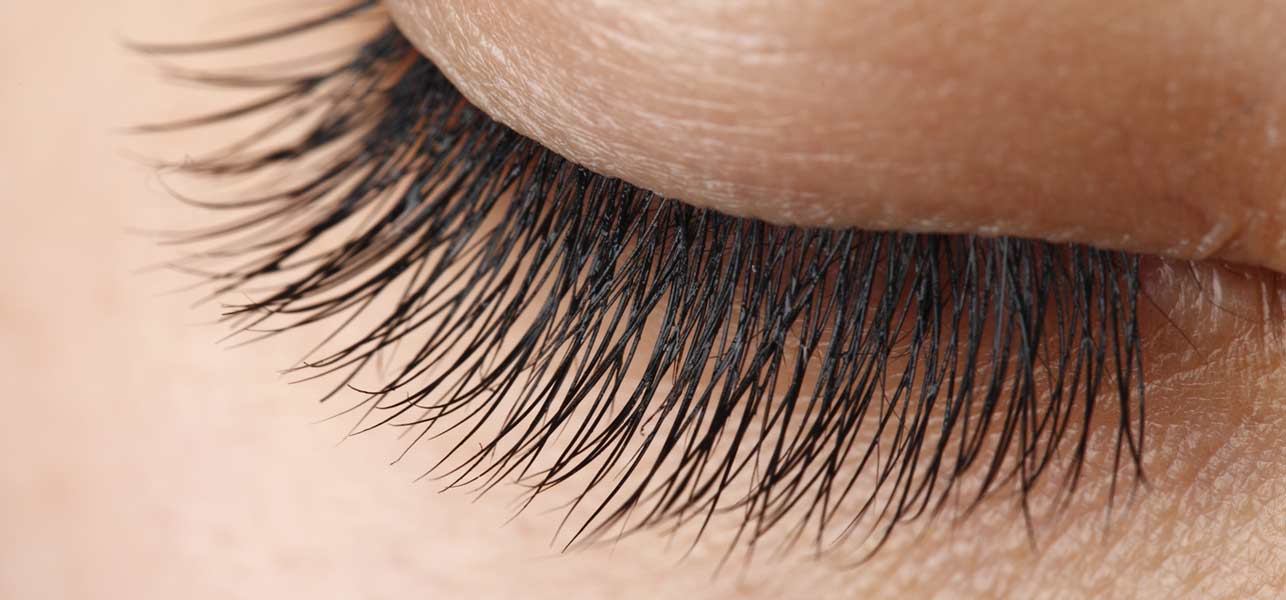HEALTHY LIVING
8 home remedies to get longer eyelashes

By StyleCraze
8 Natural Remedies To Get Beautifully Long Eyelashes
What is the most striking part of your eye? Undoubtedly your eye lashes. No matter what your eye shape and color is, long and full lashes add a quality of mystery that make your eyes so very attractive. To give our eyelashes that dramatic look, we either use mascara or fake eyelashes. But for how long ladies? Why don’t we venture into some natural ways and solutions to grow long eyelashes?
Eyelashes Care is Equally Important as Hair Care:
We care for our hair, so why not our eye lashes too? As routine hair care makes them healthier, taking care of our lashes will show positive results over the course of time. It is easy and you don’t even need to work so much as you do for hair. Whenever, you are trying to embark on a lash care routine, remember that the results will not be visible till the next cycle of the eyelashes. So, you will have to wait patiently for two months before you see any difference in your eye lashes.
Let us take a look at how to naturally make eyelashes longer and beautiful.
1.Remove Eye Makeup at the End of the Day:
Makeup clogs the skin around the eyes which is very thin already. And mascara is very heavy for the lashes. And removing it at night gives a rest to your lashes. The same rule applies here to your eye lashes as your skin as they are both equally delicate.
Also, be very gentle when you are removing your eye makeup. If you are rough with your lashes, they can become sparse and may not grow back as healthy as they are right now. Your eye lashes take longer to grow back than your hair and you don’t want to damage what you currently have.
2. Olive Oil:
Apply olive oil to your lashes. This will help them grow longer and stronger. This is one of the best home remedies to get long eyelashes.
3. A Mix of Olive and Castor Oil:
Mix olive oil and castor oil together
Now apply the resultant oil on your lashes
This will promote eyelash growth
4. Petroleum Jelly:
Pure petroleum jelly (Vaseline) if applied to your lashes regularly at night helps your lashes grow faster and makes them thicker and stronger.
5. Green Tea:
Add green tea leaves to warm water and then apply it to your eye lashes. This promotes healthy lash growth and makes them longer, thicker and stronger.
6. Lemon peels soaked in olive or castor oil:
Soak lemon peels for a few days in olive oil or castor oil
Apply this to your lashes for growth.
7. Trim Your Eyelashes:
This really helps. You can trim your lashes once every two to three months. Just trim a small part (1/4th). Trimming your lashes will stimulate the follicle of your eyelashes and makes them grow faster.
8. Diet:
Along with home remedies for long lashes, you must have a balanced diet. A few foods that are great to boost the health of your eyes and eye lashes are:
Apples
Guavas
Most fruits
Green vegetables.
Eggs
Meat
Fish
Other sources of proteins
Remember:
Make sure you never skip breakfast and include some amount of fat in your daily diet.
Don’t starve yourself to become skinny! Eat healthy and practice regular exercise, whether at the gym or simple brisk walking.
Here are a few products that will help you to boost the growth of your eye lashes:
You can use Lashfood. It is known to be a natural conditioner for the eyelashes.
Lilash is another product that you can use on your eye lashes. It contains lupinusalbus seed extract, glycerin, colloidal silver, silica and pathenol. These are all great to help the growth of your eye lashes.
Latisse works as an eyelash growth booster. It contains an ingredient called Bimatoprost which boosts eye lash growth.
The best and safest way to get great eye lashes is to eat healthy and go for natural treatments that will enhance the growth and keep them healthy.
Try these out and let us know which was your choice of treatment.
HEALTHY LIVING
Know these 4 core factors to avoid a heart health syndrome

(Family Features) In the U.S., 1 in 3 adults is at risk for a newly recognized syndrome that comes from a combination of heart disease, kidney disease, type 2 diabetes and excess body weight. This cluster of conditions, called cardiovascular-kidney-metabolic (CKM) syndrome, is an example of how problems in one part of your body can affect other parts.
To avoid CKM syndrome, health experts suggest paying close attention to four of the American Heart Association’s Life’s Essential 8 – blood pressure, lipids, body weight and blood sugar level – which are core health factors that impact your metabolic health.
Good metabolic health means your body uses energy well and keeps these factors in a normal range. However, when numbers are off in one area, it can affect others, raising your risk for heart disease, stroke, kidney disease and diabetes.
Consider these tips from the American Heart Association to help keep your core health factors under control.

Blood Pressure
High blood pressure, also known as hypertension, happens when the force of your blood pushing against the walls of your blood vessels is too high. High blood pressure is a leading cause of heart disease, stroke and kidney disease.
Because high blood pressure doesn’t have symptoms, the only way to know you have it is to get your blood pressure checked. Healthy blood pressure is below 120/80. If your blood pressure is 130/80 or higher, talk to your doctor about checking your other core health factors.
Lifestyle changes can help reduce high blood pressure. One example is a Dietary Approaches to Stop Hypertension (DASH) eating pattern that’s low in fat and rich in fruits, vegetables, whole grains and low-fat dairy products. Losing 10 pounds and reducing alcohol consumption can also reduce blood pressure.
Cholesterol
Cholesterol is a waxy substance your liver makes then circulates in the blood where your body uses it to build cells and make vitamins and hormones. You may also get cholesterol from eating animal products. If there’s too much cholesterol circulating, your risk of type 2 diabetes, heart disease and stroke may increase.
For optimal CKM health, your LDL cholesterol should be below 100 and triglycerides below 150. Triglycerides are the most common type of fat in the body. If your triglyceride level is 135 or higher, talk to your doctor about decreasing your risk.
Losing body weight and increasing physical activity decrease triglyceride levels. In addition, DASH and Mediterranean (plant-based, high-fiber, low-fat) eating patterns support healthy LDL and triglyceride levels.
Body Weight
Healthy weight may be determined by body mass index (BMI), a number that represents your weight in relation to your height. Extra body fat can mean a higher risk for many health problems, including heart disease, stroke, high blood pressure, high cholesterol and diabetes.
CKM syndrome starts when BMI is 25 or higher and waist circumference is 88 centimeters or higher for women and 102 centimeters or higher for men. Aim for a BMI between 18.5-25.
To lose weight and keep it off, start by setting realistic goals. Understand how much and why you eat, manage portion sizes, make smart snack substitutions and be physically active.
Blood Sugar
High blood sugar can slowly damage the kidneys. In fact, diabetes is the leading cause of kidney disease, and it increases the risk of heart attack and stroke.
Blood sugar is measured in two ways: a fasting blood glucose test (short term blood sugar) and an A1C test (long term blood sugar control). A normal fasting blood glucose level is 70-99 and a normal A1C level is below 5.7%. Fasting blood glucose above 125 and A1C of 6.5% or higher means you have diabetes.
Habits that help you avoid high blood pressure, weight gain and high cholesterol also keep your blood sugar in check. These are especially important if you have a family history of diabetes.
Learn more about CKM syndrome and how to manage your risk at heart.org/CKMhealth.
Photos courtesy of Shutterstock
SOURCE:
American Heart Association
HEALTHY LIVING
What older adults need to know about vaccines for a healthy new year

(Family Features) Around the new year, many people set goals for better health. People ages 65 and older can kick off a healthy new year by getting vaccinated for flu, COVID-19 and RSV. These respiratory infections can become more dangerous as people age. Vaccines can help older people risk less severe illness and do more of what they enjoy.
Those who provide care for older adults can support their health by helping them get vaccinated now. That’s especially important because older people have a higher risk of getting very sick or even dying from flu, COVID-19 and RSV.
Vaccines help protect older adults from serious illness
As people get older, their ability to fight off infection decreases, putting them at higher risk for complications if they get a respiratory infection. They are more likely to get severely ill and need medical or hospital care from flu, COVID-19 and RSV. Those living in long-term care facilities often have health issues that make flu, COVID-19 and RSV serious risks.
The Centers for Disease Control and Prevention (CDC) urges all people ages 6 months and older to get this season’s flu and COVID-19 vaccines.
Those ages 75 and older – or ages 60 and older with certain health issues or who live in a nursing home – should get one dose of an RSV vaccine if they haven’t had it before. It’s safe to get vaccines for flu and COVID-19 (and RSV, for those who are eligible) all at the same time. Any side effects from the vaccines are usually mild and go away on their own in a few days.
Get vaccinated for a healthy new year
Vaccines are a great way for older people to start the year by protecting their health. Most deaths from flu, COVID-19 and RSV are in people ages 65 and older, and the risk grows with age. However, vaccines cut your risk of being in the hospital for flu or COVID-19 by about half and for RSV by about 70%, according to the CDC.
Those who look after older loved ones can help them avoid severe respiratory illness by helping them get vaccinated. In addition to getting vaccinated, there are other ways to help prevent serious illness. When around others indoors, use fans or open windows for better ventilation. Wearing a mask, using physical distancing and washing your hands often can also help. You can use home tests to check for COVID-19 if you have symptoms.
Visit cdc.gov/RiskLessDoMore to learn more about flu, COVID-19 and RSV vaccines. Order your free COVID-19 test kits (up to four per household) at COVIDTests.gov.
Talk with your doctor about which vaccines are right for you or an older adult you care for. Or go to vaccines.gov to get started and find a pharmacy near you.
Photo courtesy of Shutterstock
HEALTHY LIVING
What you need to know about glaucoma

(Family Features) More than 4.2 million Americans live with glaucoma, a leading cause of vision loss in the nation. Although there is no cure for glaucoma, early detection and treatment can stop this condition in its tracks.
“Glaucoma is a leading cause of vision loss and blindness in the United States, but it’s estimated that half of people with glaucoma don’t know they have it,” said Michael F. Chiang, M.D. “Glaucoma has no early symptoms, and the only way to check if you have it is to get a comprehensive dilated eye exam. There’s no cure for glaucoma, but starting treatment as early as possible can help stop vision loss.”
Regular eye exams are among the best lines of defense because symptoms may not appear until the disease has progressed significantly. Knowing more about how to spot the condition and what you can do about it may help protect your vision in the long run.
Glaucoma is actually a group of eye diseases that damage the optic nerve in the back of the eye and cause vision loss and blindness. The most common type in the United States is open-angle glaucoma. Other, less common, types include angle-closure glaucoma and congenital glaucoma.
Learn more about glaucoma from the experts at the National Eye Institute in honor of Glaucoma Awareness Month.
Causes
For some people, glaucoma is the result of another medical condition, but that’s not always the case. While experts still aren’t sure exactly what causes open-angle glaucoma, it’s believed to be related to the pressure that builds in the eye when fluid doesn’t drain fast enough. Over time, the pressure causes nerve damage, which then leads to vision loss.
Risk Factors
Glaucoma is not preventable and can affect anyone. However, some groups of people are at higher risk, including those over age 60 – particularly Hispanic or Latino individuals. African American individuals over age 40 are also at greater risk, as are people with a family history of glaucoma.
Symptoms
Early on, most people do not experience any symptoms of glaucoma. Over time, you may start to notice disruptions to your vision, such as blind spots or decreased peripheral vision (what you see from the sides of your eyes) in one or both eyes. This loss may be especially prevalent closest to your nose. Symptoms typically progress so slowly that people get used to it and don’t realize their vision is changing, which is why so many people with glaucoma don’t know they have it.
Intense eye pain, nausea, red eyes and blurry vision are all potential signs of angle-closure glaucoma, and immediate emergency treatment is necessary.
Diagnosis
The only way to properly diagnose glaucoma is through a dilated eye exam, including visual field testing to check your side vision. This routine test is painless and involves looking straight ahead while your doctor checks how well you can see objects off to the side or at the top or bottom of your field of vision.
Treatment
Without treatment, glaucoma can eventually lead to blindness. Treatment won’t undo any vision damage, but it can stop it from getting worse. Treatment may involve prescription eye drops to reduce eye pressure. Other treatment options include a laser procedure or surgery to help fluid drain. Vision rehabilitation services and devices may help if vision loss affects your everyday activities.
Find more information about glaucoma and eye health at nei.nih.gov/glaucoma.
Photo courtesy of Shutterstock
SOURCE:
National Eye Institute
-

 NEWS2 years ago
NEWS2 years ago2 hurt, 1 jailed after shooting incident north of Nocona
-

 NEWS1 year ago
NEWS1 year agoSuspect indicted, jailed in Tia Hutson murder
-

 NEWS2 years ago
NEWS2 years agoSO investigating possible murder/suicide
-

 NEWS2 years ago
NEWS2 years agoWreck takes the life of BHS teen, 16
-

 NEWS2 years ago
NEWS2 years agoMurder unsolved – 1 year later Tia Hutson’s family angry, frustrated with no arrest
-

 NEWS2 years ago
NEWS2 years agoSheriff’s office called out to infant’s death
-

 NEWS2 years ago
NEWS2 years agoBowie Police face three-hour standoff after possible domestic fight
-

 NEWS2 years ago
NEWS2 years agoDriver stopped by a man running into the street, robbed at knifepoint







